Palazzo Pitti, Florence

Diana and Callisto, Pietro Paolo Bonzi

Portrait of a young woman, Sandro Botticelli

Narcissus, Francesco Curradi
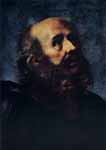
Moses, Carlo Dolci

Portrait of Vittoria della Rovere in Widow's Weeds, Carlo Dolci
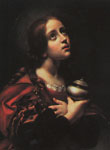
Mary Magdalene, Carlo Dolci
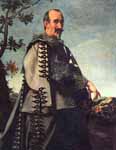
Portrait of Ainolfo de' Bardi, Carlo Dolci

Portrait of Cardinal Bentivoglio, Anthony van Dyck

Bitch, Giovanna Garzoni
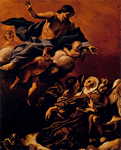
Ecstasy of St Margaret of Cortona, Giovanni Lanfranco
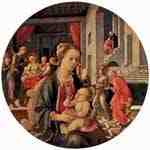
Mary with the Child, Tondo, Fra Filippo Lippi

Still-life, Giovanni Martinelli

Madonna, Bartolomé Esteban Murillo

Virgin and Child with rosary , Bartolomé Esteban Murillo

River Landscape, Filippo Napoletano

Seller of Snails, Filippo Napoletano

Two Shells, Filippo Napoletano
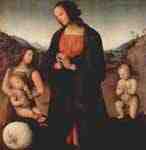
Madonna of the Sacco, Pietro Perugino
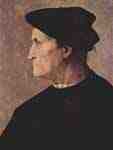
Profile portrait of a man (Francesco da Castiglione ? ), Jacopo Pontormo
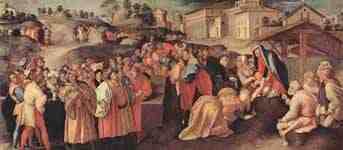
Adoration of the Magi, Jacopo Pontormo

Mary Magdalen, Domenico Puligo

Portrait of a Boy, Domenico Puligo
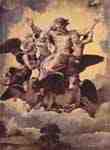
Vision of St. Ezekiel, Prophet, Raphael
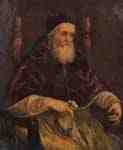
Portrait of Pope Julius II, Raphael
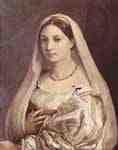
Portrait of a Woman (La Velata ), Raphael
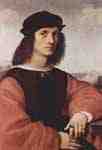
Portrait of Angelo Doni, Raphael

Portrait of Maddalena Doni , born Strozzi, Raphael
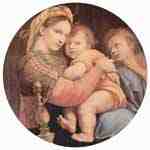
Madonna della Seggiola, Raphael

Madonna del Granduca, Raphael

Caritas, Oval, Guido Reni
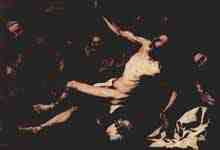 Martyrdom of St. Bartholomew, José de Ribera
Martyrdom of St. Bartholomew, José de Ribera

St. Francis of Assisi, José de Ribera
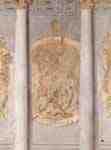
Palazzo Pitti : Diana and Callisto, Sebastiano Ricci

Palazzo Pitti : Venus and Adonis, Sebastiano Ricci
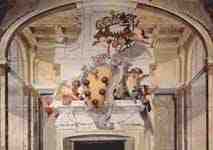
Palazzo Pitti : Coat of arms of the Medici, Sebastiano Ricci
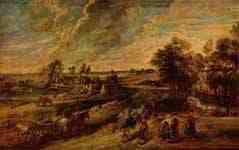
Return of the farmers from the field, Peter Paul Rubens
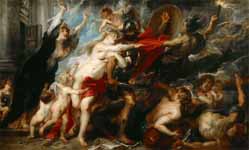
The Consequences of War , Peter Paul Rubens
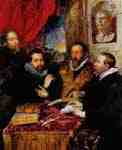
Four Philosophers , Peter Paul Rubens

The young John, Andrea del Sarto
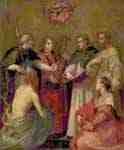
Dispute about the Trinity, Andrea del Sarto
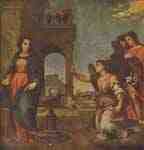
Annunciation, Andrea del Sarto

Martyrdom of St. Agatha, Sebastiano del Piombo

Satyr Dance, Cornelis van Poelenburgh

Roman Ruins, Cornelis van Poelenburgh
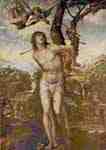
St. Sebastian and Madonna with Saints, Sodoma
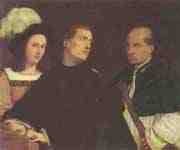
The concert, Titian
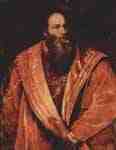
Portrait of Pietro Aretino, Titian
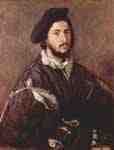
Portrait of Vincenzo Mosti, Titian
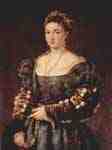
La Bella, Titian

Portrait of a Young Man ( The Young Englishman), Titian
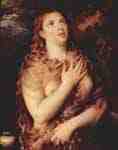
Penitent Mary Magdalene, Titian

Prince Leopoldo de' Medici in a Cradle, Tiberio di Tito

Portrait of a Dog, Tiberio di Tito
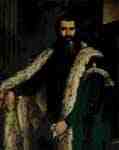
Portrait of Daniele Barbaro, Paolo Veronese
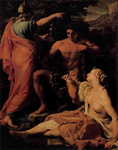
Hercules at the Crossroads, Pompeo Batoni

Portrait of a Woman, Paris Bordone
The Palatine Gallery, the main gallery of Palazzo Pitti, contains a large ensemble of over 500 principally Renaissance paintings, which were once part of the Medicis' and their successors' private art collection. The gallery, which overflows into the royal apartments, contains works by Raphael, Titian, Perugino (Lamentation over the Dead Christ), Correggio, Peter Paul Rubens, and Pietro da Cortona.[15] The character of the gallery is still that of a private collection, and the works of art are displayed and hung much as they would have been in the grand rooms for which they were intended rather than following a chronological sequence, or arranged according to school of art.
The finest rooms were decorated by Pietro da Cortona in the high baroque style. Initially Cortona frescoed a small room on the piano nobile called the Sala della Stufa with a series depicting the Four Ages of Man which were very well received; the Age of Gold and Age of Silver were painted in 1637, followed in 1641 by the Age of Bronze and Age of Iron. They are regarded among his masterpieces. The artist was subsequently asked to fresco the grand ducal reception rooms; a suite of five rooms at the front of the palazzo. In these five Planetary Rooms, the hierarchical sequence of the deities is based on Ptolomeic cosmology; Venus, Apollo, Mars, Jupiter (the Medici Throne room) and Saturn, but minus Mercury and the Moon which should have come before Venus. These highly ornate ceilings with frescoes and elaborate stucco work essentially celebrate the Medici lineage and the bestowal of virtuous leadership.[16] Cortona left Florence in 1647, and his pupil and collaborator, Ciro Ferri, completed the cycle by the 1660s. They were to inspire the later Planet Rooms at Louis XIV's Versailles, designed by Le Brun.
The collection was first
opened to the public in the late 18th century, albeit rather
reluctantly, by Grand Duke Leopold, Tuscany's first enlightened ruler,
keen to obtain popularity after the demise of the Medici.[9]
Rooms of Palatine Gallery[17]
The Palatine Gallery has 28 rooms, among them:
Room of Castagnoli: named after the painter of the ceiling frescoes. In this room are exposed Portraits of the Medici and Lorraine ruling families, and the Table of the Muses, a masterwork of stone-inlaid table realized by the Opificio delle Pietre Dure between 1837 and 1851.
Room of the Ark: contains a painting by Giovan Battista Caracciolo (17th century). In 1816, the ceiling was frescoed by Luigi Ademollo with Noah entering Jerusalem with the Ark.
Room of Psyche: was named after ceiling frescoes by Giuseppe Collignon; it contains paintings by Salvator Rosa from 1640–1650.
Hall of Poccetti: The frescoes on the vault were once ascribed to Bernardino Poccetti, but now attributed to Matteo Rosselli. In the center of the hall is a table (1716) commissioned by Cosimo III. In the hall are also some works by Rubens and Pontormo.
Room of Prometheus: was named after the subject of the frescoes by Giuseppe Collignon (19th century) and contains a large collection of round-shaped paintings: among them is the Madonna with the Child by Filippino Lippi (15th century), two portraits by Botticelli and paintings by Pontormo and Domenico Beccafumi.
Room of Justice: has a ceiling frescoed by Antonio Fedi (1771–1843), and displays portraits (16th century) by Titian, Tintoretto and Paolo Veronese.
Room of Ulysses: was frescoed in 1815 by Gaspare Martellini, it contains early works by Filippino Lippi and Raphael.
Room of Iliad: contains the Madonna of the Family Panciatichi and the Madonna Passerini (both circa 1520) by Andrea del Sarto, and paintings by Artemisia Gentileschi (17th Century).
Room of Saturn: contains a Portrait of Agnolo Doni (1506), the Madonna of the chair(1516), and Portrait of Cardinal Inghirami (1516) by Raphael; it also contains an Annunciation(1528) by Andrea del Sarto, and Jesus and the Evangelists (1516) by Fra Bartolomeo.
Room of Jupiter: contains the Veiled Lady, the famous portrait by Raphael (1516) that, according to Vasari, represents the woman loved by the artist. Among the other works in the room, Paintings by Rubens, Andrea del Sarto and Perugino.
Room of Mars: is characterized by works by Rubens: the allegories representing the Consequences of War (hence the name of the room) and the Four Philosophers (among them Rubens portrayed himself, on the left). On the vault is a fresco by Pietro da Cortona, Triumph of the Medici.
Room of Apollo: contains a Madonna with Saints (1522) by Il Rosso, originally from the Church of Santo Spirito, and two paintings by Titian: a Magdalen and Portrait of an English Nobleman (between 1530 and 1540).
Room of Venus: contains the Venere Italica (1810) by Canova commissioned by Napoleon. On the walls are landscapes (1640–50) by Salvator Rosa and four paintings by Titian, 1510–1545. Among the Titian paintings is a Portrait of Pope Julius II (1545) and La Bella (1535).
White Hall: once the ball room of the palace, is characterized by the white decorations and is often used for temporary exhibitions.
The Royal Apartments include 14 rooms. Their decoration has been changed to Empire style by the Savoy, but there are still some rooms maintaining decorations and furniture from the age of the Medici.
The Green Room, was frescoed by Giuseppe Castagnoli in early 19th Century. It exhibits an Intarsia Cabinet from the 17th century and a Collection of Gilded Bronzes; the Throne Room was decorated for King Vittorio Emanuele II of Savoy and is characterized by the red brocate on the walls and by the Japanese and Chinese Vases (17th-18th century).
The Blue Room contains collected Furniture (17th-18th century) and the Portraits of members of the Medici Family painted by Justus Sustermans (1597–1681).
----
Fine Art Prints | Greeting Cards | Phone Cases | Lifestyle | Face Masks | Men's , Women' Apparel | Home Decor | jigsaw puzzles | Notebooks | Tapestries | ...
----
Artist
A - B - C - D - E - F - G - H - I - J - K - L - M -
N - O - P - Q - R - S - T - U - V - W - X - Y - Z
Retrieved from "http://en.wikipedia.org/"
All text is available under the terms of the GNU Free Documentation License



